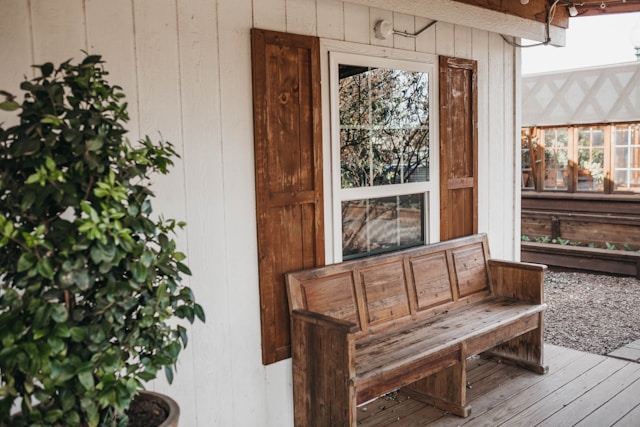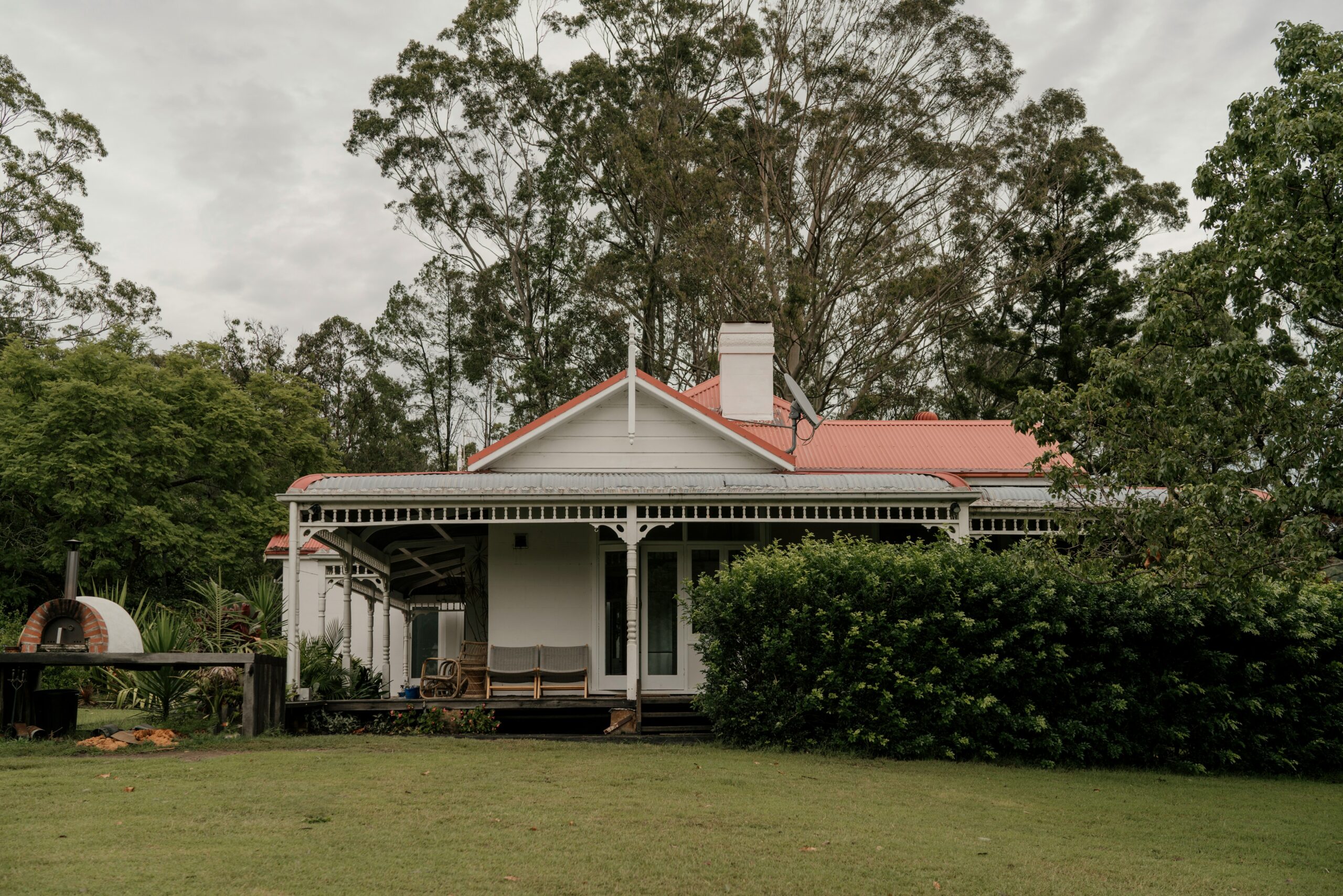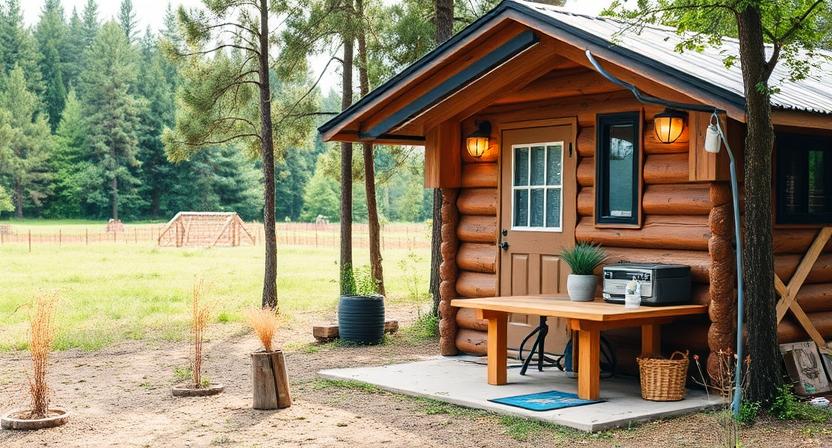Crafting Rustic Furniture: A Step-by-Step Guide

Materials needed for crafting rustic furniture
Crafting rustic furniture requires a selection of essential materials to bring your visions to life. First and foremost, you will need quality wood that embodies the rugged charm of rustic design. Opt for sturdy varieties such as oak, pine, or cedar that can withstand the test of time and add character to your creations.
In addition to wood, stock up on basic supplies like wood glue, screws, nails, and wood stain to complete your rustic furniture pieces. These simple materials form the foundation of your projects and ensure that each piece is crafted with precision and durability. Remember, the materials you choose will ultimately shape the overall look and feel of your rustic furniture, so select wisely and let your creativity flourish.
Crafting rustic furniture requires a selection of essential materials to bring your visions to life. First and foremost, you will need quality wood that embodies the rugged charm of rustic design. Opt for sturdy varieties such as oak, pine, or cedar that can withstand the test of time and add character to your creations.
• Quality wood (oak, pine, cedar)
• Wood glue
• Screws
• Nails
• Wood stain
In addition to wood, stock up on basic supplies like wood glue, screws, nails, and wood stain to complete your rustic furniture pieces. These simple materials form the foundation of your projects and ensure that each piece is crafted with precision and durability. Remember, the materials you choose will ultimately shape the overall look and feel of your rustic furniture, so select wisely and let your creativity flourish.
Choosing the right type of wood for rustic furniture
When selecting wood for crafting rustic furniture, it is crucial to consider both the aesthetic appeal and durability of the material. Hardwoods such as oak, maple, and cherry are popular choices due to their strength and natural beauty. These woods feature distinct grain patterns that add character to the furniture, enhancing its rustic charm. Softwoods like pine and cedar are also frequently used for their affordability and ease of manipulation, making them ideal for beginners or those seeking a more casual look.
In addition to the type of wood, it is important to take into account the sustainability of the material. Opting for reclaimed wood or species that are responsibly sourced can not only give your furniture a unique and eco-friendly touch but also contribute to the preservation of forests and natural habitats. By carefully considering the properties and origins of the wood you use, you can ensure that your rustic furniture not only looks beautiful but also stands the test of time.
• Hardwoods such as oak, maple, and cherry are popular choices for rustic furniture due to their strength and natural beauty
• Distinct grain patterns in hardwoods add character to the furniture, enhancing its rustic charm
• Softwoods like pine and cedar are affordable and easy to manipulate, making them ideal for beginners or a more casual look
• Consider using reclaimed wood or responsibly sourced species for a unique and eco-friendly touch
• Choosing sustainable wood options can contribute to the preservation of forests and natural habitats
• Carefully considering the properties and origins of the wood used can ensure that rustic furniture is both beautiful and durable
Tools required for crafting rustic furniture
Crafting rustic furniture requires a few essential tools to bring your vision to life. A circular saw is a versatile tool that is essential for cutting wood to size. It allows for precise cuts and is handy for both straight and angled cuts. Additionally, a power drill with a variety of drill bits is necessary for making holes for screws and dowels to secure joints in rustic furniture pieces.
Another vital tool for crafting rustic furniture is a wood chisel. Chisels come in various sizes and are crucial for carving out intricate details or shaping wood edges. A hammer is also essential for driving in nails, adjusting pieces during assembly, and tapping joints into place. Lastly, a measuring tape and a speed square are indispensable for ensuring accurate measurements and straight perpendicular cuts, respectively.
• Circular saw for cutting wood to size
• Power drill with various drill bits for making holes
• Wood chisel for carving intricate details and shaping edges
• Hammer for driving in nails and adjusting pieces during assembly
• Measuring tape for accurate measurements
• Speed square for straight perpendicular cuts
Measuring and cutting wood accurately
To ensure precision in your rustic furniture crafting, accurate measuring and cutting of wood are essential steps. Before cutting any wooden pieces, it is crucial to measure twice and cut once to avoid errors and wastage. A reliable measuring tape, a square, and a pencil are indispensable tools for marking the measurements on the wood accurately.
When measuring wood for your rustic furniture project, always use the measuring tape to mark the dimensions clearly. Double-check that the measurements are exact before making any cuts to ensure the pieces fit together seamlessly during assembly. Remember to factor in the width of the saw blade when marking your cut lines to achieve the desired final dimensions for your rustic furniture pieces.
• Always use a measuring tape to mark dimensions clearly
• Double-check measurements before making cuts
• Factor in the width of the saw blade when marking cut lines
Joinery techniques for rustic furniture
When it comes to crafting rustic furniture, selecting the appropriate joinery technique is crucial in ensuring the strength and durability of the piece. Traditional methods such as mortise and tenon joints, dovetail joints, and lap joints are popular choices for creating sturdy connections without the need for metal fasteners. These techniques not only enhance the rustic aesthetic of the furniture but also contribute to its overall structural integrity.
Each joinery technique has its own unique characteristics and applications, allowing for creativity and customization in designing rustic furniture. By mastering the art of joinery, craftsmen can create furniture pieces that not only showcase their skills but also stand the test of time. Whether it’s a simple butt joint for a rustic bench or a more intricate dovetail joint for a drawer, the choice of joinery technique can elevate the craftsmanship of the furniture piece.
• Mortise and tenon joints: This classic joint involves a mortise hole in one piece of wood that perfectly fits the tenon projection on another piece, creating a strong connection.
• Dovetail joints: Known for their interlocking design, dovetail joints are commonly used in drawers and boxes to prevent warping or twisting over time.
• Lap joints: These simple yet effective joints involve overlapping two pieces of wood and securing them together with glue or dowels, providing stability for rustic furniture pieces.
Creating rustic furniture designs and patterns
When it comes to creating rustic furniture designs and patterns, it’s essential to draw inspiration from nature and traditional craftsmanship. Consider incorporating elements such as natural textures, organic shapes, and earthy colors to achieve an authentic rustic look. Embrace imperfections and irregularities in the wood to enhance the charm and character of your furniture pieces.
Experiment with different design motifs like log cabin style, barn wood aesthetics, or farmhouse chic to evoke a sense of coziness and warmth in your rustic furniture. Play around with patterns such as herringbone, chevron, or houndstooth to add visual interest and depth to the overall look. Remember, rustic furniture is all about celebrating the beauty of raw materials and showcasing the artistry of handmade craftsmanship.
• Incorporate natural textures, organic shapes, and earthy colors
• Embrace imperfections and irregularities in the wood
• Experiment with design motifs like log cabin style or barn wood aesthetics
• Play around with patterns such as herringbone or chevron
• Celebrate the beauty of raw materials and handmade craftsmanship
Sanding and smoothing rough edges
To achieve a polished and refined look in your rustic furniture piece, sanding and smoothing rough edges is a crucial step in the crafting process. Once the main structure is assembled, use a fine-grit sandpaper to gently rub over any uneven surfaces or sharp edges. This process not only enhances the appearance of the furniture but also ensures a smooth and safe finish that is pleasant to the touch.
After sanding the rough edges, it is important to pay attention to detail and thoroughly inspect the entire piece for any remaining imperfections. Use a sanding block or sanding sponge to reach corners and crevices that may have been missed during the initial sanding process. Taking the time to meticulously smooth out any rough spots will result in a professional-looking rustic furniture piece that exudes craftsmanship and quality.
• Once the main structure is assembled, use a fine-grit sandpaper to gently rub over any uneven surfaces or sharp edges
• Enhances the appearance of the furniture and ensures a smooth finish that is pleasant to touch
• Thoroughly inspect the entire piece for any remaining imperfections after sanding rough edges
• Use a sanding block or sanding sponge to reach corners and crevices that may have been missed during initial sanding process
• Meticulously smoothing out any rough spots will result in a professional-looking rustic furniture piece
Staining and finishing rustic furniture
When it comes to adding the final touches to your rustic furniture piece, staining and finishing play a crucial role in enhancing the overall appearance and durability. Staining wood allows you to change its color while still showcasing the natural grain patterns. Choose a stain that complements the rustic style, such as warm earth tones or rich, dark shades. Ensure the surface is clean and smooth before applying the stain evenly with a brush or cloth, following the wood grain for a uniform finish.
After staining, the next step is finishing the rustic furniture to protect it from wear and tear. Various finishing options are available, including polyurethane, wax, shellac, or lacquer. Each type offers different levels of protection and sheen, so consider the usage and aesthetic preferences of the piece. Apply multiple coats of finish, allowing each layer to dry completely before sanding lightly between coats to achieve a smooth and flawless surface. The finish not only adds a protective layer but also brings out the beauty of the wood, creating a lustrous and professional look to your rustic furniture creation.
• Staining wood allows you to change its color while still showcasing the natural grain patterns
• Choose a stain that complements the rustic style, such as warm earth tones or rich, dark shades
• Ensure the surface is clean and smooth before applying the stain evenly with a brush or cloth, following the wood grain for a uniform finish
• Various finishing options are available, including polyurethane, wax, shellac, or lacquer
• Each type offers different levels of protection and sheen
• Consider the usage and aesthetic preferences of the piece when choosing a finish
• Apply multiple coats of finish, allowing each layer to dry completely before sanding lightly between coats
• Achieve a smooth and flawless surface by sanding between coats
• The finish not only adds a protective layer but also brings out the beauty of the wood
Adding decorative elements to rustic furniture
When it comes to adding decorative elements to rustic furniture, the possibilities are endless. Simple additions like metal accents, hammered nail heads, or hand-carved designs can enhance the overall aesthetic of a piece. Consider incorporating elements like wrought iron, copper finishes, or reclaimed hardware for a touch of authenticity.
Furthermore, embellishing rustic furniture with intricate wood carvings, burnt detailing, or hand-painted designs can add a unique and personal touch to your creations. Experiment with different techniques such as distressing the wood, creating geometric patterns, or incorporating nature-inspired motifs to bring depth and character to your rustic furniture pieces.
• Incorporate metal accents like wrought iron or copper finishes
• Use hammered nail heads or reclaimed hardware for authenticity
• Experiment with intricate wood carvings, burnt detailing, and hand-painted designs
• Distress the wood for a weathered look
• Create geometric patterns or nature-inspired motifs to add depth and character
Assembling rustic furniture pieces
Assembling rustic furniture pieces requires careful attention to detail and precision to ensure a sturdy final product. Begin by laying out all the components in an organized manner to easily visualize the assembly process. Follow the provided instructions or your design plan closely to determine the order in which the pieces should be connected.
Once you have identified the correct sequence, use appropriate tools such as screws, nails, or wood glue to secure the joints firmly. Make sure to double-check measurements and alignments before finalizing the connections to avoid any potential issues later on. As you progress with the assembly, periodically assess the stability of the structure to address any wobbling or misalignments promptly.
• Lay out all components in an organized manner
• Follow provided instructions or design plan closely
• Use appropriate tools such as screws, nails, or wood glue to secure joints firmly
• Double-check measurements and alignments before finalizing connections
• Periodically assess stability of structure for any wobbling or misalignments
Securing joints and connections in rustic furniture
To ensure the sturdiness and longevity of your rustic furniture pieces, securing joints and connections is essential. One of the most common methods used in rustic furniture crafting is the traditional technique of using wood glue along with screws or nails to reinforce joints. This combination creates a strong bond between the pieces of wood, adding to the overall durability of the furniture.
Another effective way to secure joints in rustic furniture is through the use of wooden dowels or biscuits. These small wooden pieces are inserted into pre-drilled holes in the adjoining pieces of wood, providing additional support and stability. This technique not only strengthens the connections but also adds a decorative touch to the furniture piece.
• Wood glue along with screws or nails is a common method for reinforcing joints in rustic furniture
• Wooden dowels or biscuits can be used to provide additional support and stability to connections
• Using wooden dowels or biscuits adds a decorative element to the furniture piece
Tips for ensuring sturdy and durable rustic furniture
To ensure your rustic furniture stands the test of time, it is crucial to pay attention to the quality of the materials used. Opt for sturdy hardwoods like oak, walnut, or cherry that are known for their durability and strength. Avoid softer woods that are more prone to damage and wear over time. Additionally, consider using metal accents or brackets to reinforce joints and connections for added stability.
Another key factor in ensuring the sturdiness and durability of your rustic furniture is the construction technique employed. Utilize traditional joinery methods such as mortise and tenon joints or dovetail joints, which provide strong and lasting connections. Properly securing joints and connections with structural adhesives or screws will also contribute to the overall stability of the piece. Remember to take your time and pay attention to detail during the assembly process to guarantee a solid and long-lasting final product.
• Opt for sturdy hardwoods like oak, walnut, or cherry
• Avoid softer woods that are prone to damage
• Use metal accents or brackets to reinforce joints
• Utilize traditional joinery methods such as mortise and tenon joints
• Properly secure joints with structural adhesives or screws
• Pay attention to detail during the assembly process
Maintaining and caring for rustic furniture
To keep your rustic furniture looking its best, regular maintenance is key. Dust regularly with a soft cloth or a gentle brush to remove dirt and debris. Avoid using harsh chemical cleaners that can damage the wood’s finish. Instead, opt for a damp cloth with a mild soap solution for cleaning.
Wooden furniture can be prone to drying out, especially in drier climates. To prevent cracking or warping, consider applying a protective wax or oil finish every few months. This will help to nourish the wood and maintain its natural beauty. Additionally, take care to avoid placing rustic furniture in direct sunlight or near heating vents to prevent fading and premature aging.
• Dust regularly with a soft cloth or gentle brush
• Avoid harsh chemical cleaners, use mild soap solution instead
• Apply protective wax or oil finish every few months to prevent drying out
• Keep rustic furniture away from direct sunlight and heating vents
Incorporating reclaimed materials into rustic furniture
Utilizing reclaimed materials in rustic furniture crafting adds a unique charm and character to the pieces. Old barn wood, salvaged metal, and repurposed items can all be transformed into stunning furniture that tells a story. By incorporating these materials, artisans not only reduce waste but also contribute to the sustainability of their creations.
The beauty of using reclaimed materials lies in the imperfections and history they bring to the furniture. Each piece of wood or metal may bear marks of its past life, such as weathering, nail holes, or patina, which all add to the rustic appeal. Designing around these natural elements can lead to one-of-a-kind pieces that stand out for their individuality and eco-friendly approach.
• Reclaimed materials add a unique charm and character to rustic furniture
• Old barn wood, salvaged metal, and repurposed items can be transformed into stunning pieces
• Incorporating reclaimed materials reduces waste and contributes to sustainability
• Imperfections in the materials tell a story and add to the rustic appeal of the furniture
• Designing around natural elements leads to one-of-a-kind pieces with an eco-friendly approach
Customizing rustic furniture to suit your style
When it comes to customizing rustic furniture to suit your style, there are endless possibilities to make each piece uniquely yours. One way to personalize your furniture is by selecting a specific type of wood that complements your aesthetic preferences. Whether you prefer the natural warmth of oak or the rugged charm of reclaimed barn wood, your choice of wood can greatly influence the overall look and feel of the furniture.
Another way to tailor rustic furniture to your style is by adding decorative elements that reflect your personality. This can include intricate carvings, metal accents, or even hand-painted designs that showcase your individual flair. By incorporating these personalized touches, you can transform a simple piece of furniture into a statement piece that speaks to your unique tastes and preferences.
• Select a specific type of wood that complements your aesthetic preferences
• Choose between oak for natural warmth or reclaimed barn wood for rugged charm
• Wood choice greatly influences the overall look and feel of the furniture
• Add decorative elements to reflect your personality
• Consider intricate carvings, metal accents, or hand-painted designs
• Personalized touches can transform simple furniture into statement pieces
Designing and building rustic furniture for specific spaces
When building rustic furniture for specific spaces, it is essential to consider the size and layout of the area where the piece will be placed. Take precise measurements to ensure the furniture fits seamlessly into the designated space, avoiding any obstructions or overcrowding. This tailored approach allows for a harmonious blend between the rustic charm of the furniture and the overall aesthetic of the room.
Additionally, when designing rustic furniture for specific spaces, take into account the function and purpose of the piece. Whether it is a coffee table for a cozy living room or a console table for a narrow hallway, the furniture should not only complement the space visually but also serve its intended use effectively. By aligning the design with the requirements of the space, you can create functional yet stylish rustic furniture that seamlessly integrates into the environment.
• Consider the size and layout of the designated area
• Take precise measurements to ensure a seamless fit
• Avoid obstructions or overcrowding in the space
• Aim for a harmonious blend with the overall aesthetic of the room
• Factor in the function and purpose of the furniture piece
• Ensure it complements the space visually
• Design furniture that serves its intended use effectively
• Create functional yet stylish rustic furniture that integrates seamlessly into the environment
Troubleshooting common issues in rustic furniture crafting
One common issue encountered in crafting rustic furniture is the warping of wood. This can happen due to changes in humidity or improper storage of lumber. To prevent warping, it is essential to properly acclimate the wood before using it and store it in a dry environment. Additionally, using kiln-dried wood can help minimize the risk of warping in your rustic furniture projects.
Another issue that may arise is rough or uneven surfaces on the finished furniture piece. This can occur if proper sanding and smoothing techniques are not utilized during the crafting process. To troubleshoot this issue, ensure to sand the wood thoroughly, starting with a coarse grit sandpaper and gradually moving to finer grits for a smooth finish. It is important to pay attention to detail and take your time when sanding to achieve a professional-looking rustic furniture piece.
• Properly acclimate the wood before using it
• Store lumber in a dry environment
• Use kiln-dried wood to minimize warping
• Sand wood thoroughly starting with coarse grit sandpaper
• Gradually move to finer grits for smooth finish
• Pay attention to detail and take your time when sanding
Exploring different styles of rustic furniture
Rustic furniture encompasses a wide range of styles that draw inspiration from nature and traditional craftsmanship. One popular style is the Adirondack, known for its slanted backs and wide armrests, perfect for outdoor relaxation. The Farmhouse style boasts sturdy, simple designs with a focus on functionality, often seen in dining tables and chairs.
Another distinctive style is the Log Cabin furniture, which utilizes whole logs or rough-hewn timber to create a rugged and natural look. The Southwestern style incorporates elements from Native American and Spanish cultures, featuring intricate patterns, vibrant colors, and hand-carved details. Each style offers a unique aesthetic appeal, highlighting the beauty of imperfections and natural materials in rustic furniture design.
• Adirondack style: slanted backs, wide armrests, ideal for outdoor relaxation
• Farmhouse style: sturdy, simple designs with a focus on functionality, popular in dining tables and chairs
• Log Cabin furniture: utilizes whole logs or rough-hewn timber for a rugged and natural look
• Southwestern style: incorporates elements from Native American and Spanish cultures, intricate patterns, vibrant colors, hand-carved details
Showcasing finished rustic furniture projects
Upon completion, rustic furniture projects exude a timeless charm that seamlessly blends with various interior design styles. The use of natural materials and simple, yet elegant designs, adds a touch of warmth and character to any space. Whether it’s a reclaimed wood dining table with intricate detailing or a handcrafted driftwood coffee table, each piece tells a unique story of craftsmanship and creativity.
From intricately carved bed frames to rugged log benches, showcasing finished rustic furniture projects unveils the beauty of imperfections and celebrates the essence of nature within our living spaces. The rich textures and earthy tones of rustic furniture pieces create a welcoming atmosphere that invites both comfort and style into homes. Whether in a cozy cabin retreat or a modern urban loft, rustic furniture projects stand as a testament to the beauty of handcrafted creations.
– Rustic furniture projects exude a timeless charm with natural materials and elegant designs
– Each piece tells a unique story of craftsmanship and creativity
– Finished rustic furniture showcases beauty of imperfections and essence of nature in living spaces
– Rich textures and earthy tones create a welcoming atmosphere in homes
– Rustic furniture projects can fit in cozy cabin retreats or modern urban lofts
Inspiring ideas for future rustic furniture projects
For those seeking inspiration for their next rustic furniture project, consider incorporating unique elements such as reclaimed barn wood or antique hardware to add character and charm to your piece. Mixing different types of wood, such as cedar and oak, can create a visually appealing contrast that enhances the rustic aesthetic. Don’t be afraid to experiment with different stains and finishes to achieve a weathered and aged look that will complement the rustic style.
In addition to traditional rustic furniture designs, think outside the box and explore unconventional shapes and forms. Consider incorporating natural elements like branches or logs into your furniture to bring a touch of the outdoors inside. Embracing imperfections in the wood, such as knots or cracks, can add authenticity and a sense of history to your piece. By combining creativity with traditional craftsmanship techniques, you can create one-of-a-kind rustic furniture pieces that reflect your unique style and vision.
• Embrace imperfections in the wood, such as knots or cracks, to add authenticity
• Experiment with different stains and finishes for a weathered and aged look
• Mix different types of wood, like cedar and oak, for visual contrast
• Incorporate natural elements like branches or logs into your furniture design
• Consider using reclaimed barn wood or antique hardware for added character




